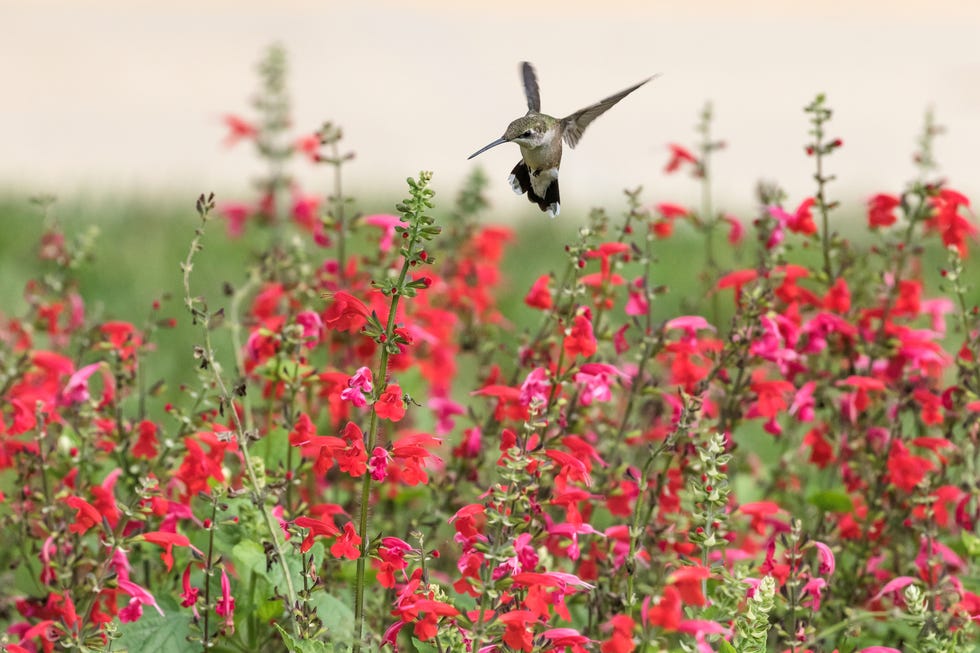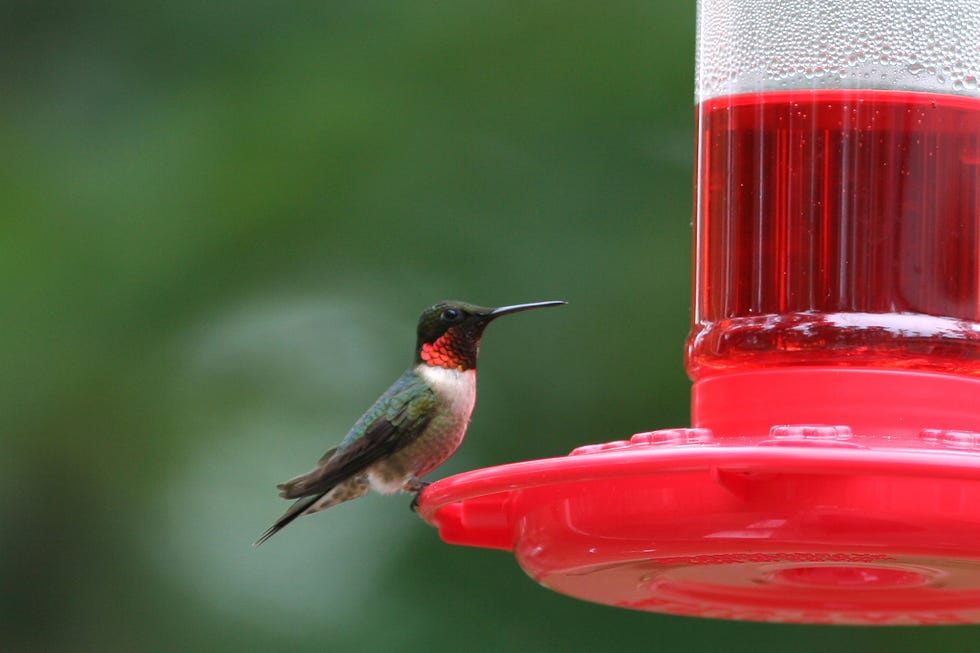We love when these little beauties zip around our gardens, visiting our feeders and sipping from our flowers. But if you feel like you haven’t seen any hummingbirds lately, you may not be mistaken. “Summertime is nesting season, and one reason you might not see them as often is because they’re busy with nests,” says Holly Grant, project assistant for NestWatch at Cornell Lab of Ornithology.
Like any new parent, these birds are focused on their babies. “Hummingbirds like Ruby-throated, which are common in the East, Anna’s and Broad-billed, which are both common in the West, need about two weeks to incubate their tiny eggs,” says Grant. “During that time, they’re trying to be as secretive as possible, so they don’t unintentionally attract predators to their nests.”
After the babies hatch, there’s still plenty of work to do because the females will tend to the young for three weeks. “During this nestling period, they’ll split time between brooding the young and flying off to forage for food to bring back for the youngsters,” says Grant. In the meantime, the males are busy defending their territory around the nest and food sources.
Adults eat a combination of nectar, such as from our feeders, and insects, catching them midair or pulling them from spider webs. Their main prey are mosquitoes, gnats, fruit flies, small bees, and spiders. “The youngsters need the protein from those insects to grow strong, and so you might not see the adults around your feeders as much during this period as they’d only be visiting for themselves,” says Grant. “Otherwise, they’re busy catching insects for their chicks.”
Related Stories
Read on to learn more reasons why you’re not seeing hummingbirds and what to do about it:
Where Are All My Hummingbirds?
Another reason you might not see hummers is because they’re good at blending into the environment. “Hummingbirds are tiny and well camouflaged, so they can be hard to spot if they’re not coming to a feeder that’s in easy view,” says Grant. “If you want to see more of them, place the feeder in a spot you can observe from inside or from a safe distance away, such as the opposite end of the porch or deck where your seating is.” If there’s too much human (or pet) traffic, they might not be brave enough to come over for a drink.
In addition, hummingbirds like to have a shrub or tree nearby to rest on or retreat for cover, says Grant. And sometimes males get territorial over a feeder and chase other birds away. However, “they can’t keep it up forever, so you’ll sometimes see another bird sneak in when he isn’t looking.” If you do have birds dueling, hang a second feeder out of sight of the first.
Another reason you may not spot them as often in mid-summer is because there are lots of nectar sources this time of year, especially if you’ve planted flowers they like. “Hummingbirds have a lot more choice for nectar in summer, so that’s another reason you may not see them at your feeders as often,” says Grant.

Marcia Straub//Getty Images
Do Hummingbird Numbers Fluctuate?
Bird populations always fluctuate naturally. “The biggest drivers are food availability, weather conditions, predator presence, and habitat changes. Any of these can control how well the population does in any given year or may cause them to shift their geographic populations slightly,” says Grant.
It might seem like you see more or fewer birds at certain times of summer because of the breeding activity, but their numbers aren’t really fluctuating. “They’re just trying to be more inconspicuous while they tend to their nests,” says Grant.
Although bird populations overall are declining, some hummingbird species, such as Ruby-throated and Anna’s, seem to be fairly stable for now in their range, says Grant. However, others, such as Rufous and Broad-tailed hummingbirds, are in decline.

JLFCapture//Getty Images
How Can I Attract Hummingbirds?
Planting flowers that hummers love will keep them coming back to your garden. They’ll sip from a variety of flowers, but red tubular flowers, such as trumpet vine, cardinal flower, bee balm, and jewel weed, are some of their favorites, says Grant.
Related Story
Feeders also help attract hummingbirds, but make sure to keep yours safe for birds. “Clean your feeder every 2 to 3 days and every day in hot weather,” says Grant. “Letting it sit out too long and not cleaning your feeders on a regular basis will encourage mold and bacteria growth, which can make birds sick.”
Take the entire thing apart and use a tiny scrub brush to clean the feeding ports well, too. Then refill with a recipe of one part sugar to four parts water. In colder weather a 1:3 ratio is okay, says Grant. Use only regular table sugar—no additives, no raw sugar, no honey—just white sugar and no red food dye, which can harm them. Birds are attracted to the color red, but the feeder color itself will draw them in—or tie a red ribbon to the top if your feeder is clear.

glennimage//Getty Images
Should I Take My Hummingbird Feeder Down in Fall?
Once the weather starts cooling down, you’ll likely see hummingbirds in larger numbers as they fuel up for their big trip south. But don’t worry about keeping your feeders up too long. “Feeders will not prevent hummingbirds from migrating because migration is triggered by the length of day,” says Grant. “They’ll leave when they’re ready to migrate.”
In fact, it’s a good idea to leave feeders up throughout the fall months to help give the birds that extra energy boost to make it to their wintering grounds, says Grant. You can actually get a look at the timing of migration for various species on the eBird Status and Trends map.
Related Story


Comments are closed.